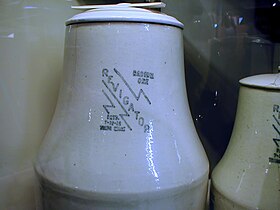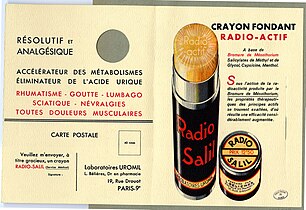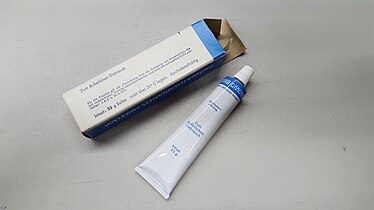
The radium fad or radium craze of the early 20th century was an early form of radioactive quackery that resulted in widespread marketing of radium-infused products as being beneficial to health. Many radium products contained no actual radium, in part because it was prohibitively expensive, which turned out to be a grace, as high levels of radium exposure can result in radiation-induced cancer.
The fad began to fizzle out following the emergence of research that radium could be hazardous to health, and high-profile cases such as the Radium Girls and the death of Eben Byers, which proved this fact.
In the United States, the 1938 Federal Food, Drug and Cosmetic Act outlawed deceptive packaging, further preventing companies being able to use radium as a marketing tool.
Radium-infused products
Radium was added to, or used to market, a number of consumer goods. These included cosmetics, such as the brand Tho-Radia, toothpaste, hair cream, and hemorrhoid cream.
Radium was also used to market foods and drinks, although products such as Radium Brand Creamery Butter did not actually contain any radium. Radithor, an "energy drink" of distilled water with traces of radium, was marketed as a panacea. One of its most famous advocates, golfer Eben Byers, died in 1932 of radium poisoning through his consumption of the product. A number of water sources (such as bottlers or artesian hot-spring spa hotels) rebranded themselves as "radium water" or radium springs to capitalize on the craze.
Radium was also used to give products a glowing appearance, as in the case of watches painted with radium-containing paint.
Radium was also used in some ceramics, including in the production of radium water crocks, whose purpose was to irradiate drinking water.
Gallery
-
 Tho-Radia advertising poster
Tho-Radia advertising poster
-
 Tho-radia products
Tho-radia products
-
 Radior cosmetics containing radium, 1918
Radior cosmetics containing radium, 1918
-
Tho-Radia face powder containing radium and thorium
-
 Revigorator, 1929, pottery crock lined with radioactive ore that emitted radon; drinking water in such a crock was considered curative.
Revigorator, 1929, pottery crock lined with radioactive ore that emitted radon; drinking water in such a crock was considered curative.
-
 Crayon Fondant Radio-actif salve for muscular pain
Crayon Fondant Radio-actif salve for muscular pain
-
 Radium Water Bath Department, top floor, Hotel Will Rogers, Claremore, Okla., U.S.A
Radium Water Bath Department, top floor, Hotel Will Rogers, Claremore, Okla., U.S.A
-
 Weleda Uraninit-Salbe, radioactive salve for back pain containing radioactive uraninite ore containing radium, 1970s
Weleda Uraninit-Salbe, radioactive salve for back pain containing radioactive uraninite ore containing radium, 1970s
See also
- Uranium glass
- Lead pipes
- Arsenic green (disambiguation)
- Asbestos
- Electrical quackery
- History of radiation protection
References
- Suihkonen, Andrea (2021-04-16). "Atomic Panacea: The Radium Fad of the Early 20th Century". UWM Undergraduate Research Symposium.
- ""Get Me A Radium Highball!": New York and the Radium Craze". New-York Historical Society (nyhistory.org). Retrieved 2024-01-21.
- ^ Prisco, Jacopo (2020-03-03). "When beauty products were radioactive". CNN. Retrieved 2024-01-21.
- ^ Dotinga, Randy (2020-02-15). "The lethal legacy of early 20th-century radiation quackery". The Washington Post. Retrieved 2024-01-21.
- "Before 'raw water,' radium water was the craze — and then people died". Chicago Tribune. 2018-03-03. Retrieved 2024-01-21.